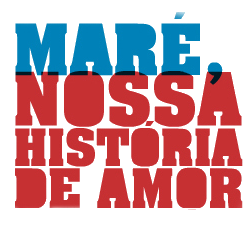
Art On Periphery
Deize Tigrona
Deize, who sings her best known song, “Injeção”, in a funk ball in the film, is the result of a major revolution in the funk world, previously dominated by men. Timid, she seems the opposite of her songs, in which sex is treated with a naturalness that surprises even the most modern and “with it” women. She herself says that the entry of women into the world of funk indicates a thematic change in the sex war and man/woman relations. It is at this ball, where Deize sings, that our pair of heroes meet for the first time.
Hip Hop Kako
Kako, or better, Amaury, is one of those selected among 500 dancers to be one of the dance group in the film. In the CV he delivered to production, he said he was also a singer and composer. This counted in the final selection, but his inclusion as a singer was his own doing. When he heard that we planned a hip hop challenge, he proposed a song that he had written specially for the scene: “Racha na Maré”.
Geleia, naive surrealism
José Jaime, “Geléia da Rocinha”, (Jelly from Rocinha – the largest favela in South America) is an artist who has had his paintings exhibited in various galleries in Rio and in other countries, such as Germany, France, Norway, Japan and the USA. Using a technique of his own, he developed a line of painting which he classifies as “naive surrealism”. He has worked as a porter, bus conductor, soccer player, bricklayer and doorman in a brothel. Discovered in 1988 by Gringo Cardia, who needed a sign painter, he gets special mention in the film. One of his designs was painted on the wall in one of the most dramatic and important scenes in the film.

Sign painters, the favela’s visual programmer
One of the artistic forms most used in the periphery are the signs and boards where everything is announced. They are done by the sign painters. The Art Director contracted various of them to make the boards, banners and phrases that are all over the place where the filming was done. The game among the crew was to try and tell the difference between the “contracted” signs and the “real” ones that were there before.

Graffitists
The greatest form of expression in the periphery has reached the formal part of the city. Today, the graffitists from the favela share the space with many middle class kids. In the film graffiti is a fundamental artistic and dramatic means of expression – such as the face – a mixture of fright, horror and happiness – painted on the door of the shed where the dance school operates, a perfect image for the erudite music of Prokofiev.
Spetaculu
An NGO created in the year 2000 by Gringo Cardia and Marisa Orth to transform kids from the communities into scene building professionals for the theater and cinema, “Spectaculu” had an important part in the making of the film. Its material was used for many of the scenes and its students took part in the preparation of the scenery, working side by side with the art team.
Dançando para não dançar
Ingrid, Francisca and Biazinha, selected from the students of the group “Dançando para não Dançar”, added classical ballet to the dancing in the film, fundamental to the formation of the “cauldron” intended. Created in 1995 by ballerina Teresa Aguilar, the “Dançando Para Não Dançar” project today teaches dance to around 450 children from 11 communities in Rio de Janeiro, including Cantagalo, Pavão-Pavãozinho, Rocinha, Mangueira, Chapéu Mangueira, Babilônia, Macacos, Tuíuti, Jacarezinho, Salgueiro and Dona Marta.
Ethnic diversity
Fábio, Raquel and Amanda were selected during tests with the Companhia Étnica de Dança, created by Carmem Luz in 1996 to preserve the tradition of afro dances. Its students, who are also trained in classical, jazz and contemporary dance, were important to the theme of ethnic diversification.
Hip Hop groups
Tiago, Anjo and Washington learned their steps from street dancing, watching videos and going to balls. Later, they took part in various hip-hop groups and contemporary companies. Tiago, from the Turano community, is a member of the “Companhia Urbana de Dança”, run by choreographer Sonia Destri. Washington, who lives in the Camaresca favela, in Engenho de Dentro, has been to Paris with Bruno Beltrão’s “Grupo de Rua de Niterói”. Anjo, from the Morro da Providência favela, after taking part in various street dance groups, was given a dramatic role in the film, and is now working on a career as an actor.
Rap group Nação Maré
Rap is street poetry, is telling stories. The Nação Maré group, which appears in the film as a Greek chorus that narrates the story, had its first cinema job in the documentary Vinícius de Morais, acting out his poetry. The trio however, made up of MS Bom, Leroy and Nego Jeff, started long before, among the pilings of the old Maré favela. Each living in areas dominated by different factions, they were involved in the screenplay for the film. Today they hold poetry and rap workshops in the Maré favela.







